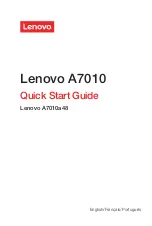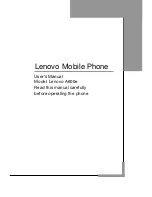
Engineering Guidelines
250
Block size is not user configurable on either the 3300 or the phone, however TFTP block size
could be user configurable on some 3'rd party external TFTP servers.
In situations where phones are accessing an external TFTP server over a very slow connection
reduce, if possible, the transmitted block size from 4096 to a smaller number; 512 or 1024. This
will increase the number of ack/nack messages, but will ensure that the four second inter-packet
timer is less likely to be exceeded, especially when multiple phones share the same restricted
link.
For best performance the TFTP server should be connected to the network with a minimum
bandwidth of 100Mbits/s. Lower bandwidth will reduce the throughput and result in increased
delays to bring the phones into service.
For a WAN link, the minimum bandwidth to ensure timely startup with minimum retries at the
phone is 15 kbits/s per phone. Higher bandwidths will result in phones returning to service
quicker, and a practical value to consider might be 100kbits/s/phone. Less available bandwidth
may result in phones retrying to complete the download and hence take additional time.
Depending on the total number of phones that require access to the common TFTP server and
the time to have these in service the following WAN minimum bandwidths per phone are
recommended:
Although lower bandwidths may be used, this may result in a number of phones failing to
complete the download in the expected time, resulting in subsequent retries and time to come
into service.
Table 74: TFTP Server Recommended Bandwidth
TOTAL NUMBER OF
PHONES ON TFTP
SERVER
RECOMMENDED MINIMUM WAN BANDWIDTH PER PHONE
500
20kbits/s
1000
35kbits/s
1500
50kbits/s
2000
70kbits/s
2500
85kbits/s
3000
100kbits/s
3500
120kbits/s
4000
135kbits/s
4500
150kbits/s
5000
170kbits/s
Summary of Contents for MiVOICE BUSINESS
Page 1: ...Mitel MiVoice Business RELEASE 7 2 ENGINEERING GUIDELINES ...
Page 15: ...Chapter 1 ABOUT THIS DOCUMENT ...
Page 16: ......
Page 22: ...Engineering Guidelines 8 ...
Page 23: ...Chapter 2 SYSTEM OVERVIEW ...
Page 24: ......
Page 28: ...Engineering Guidelines 14 ...
Page 29: ...Chapter 3 TYPICAL CONFIGURATIONS ...
Page 30: ......
Page 73: ...Chapter 4 PHONES AND VOICE APPLICATIONS ...
Page 74: ......
Page 95: ...Phones and Voice Applications 81 Figure 9 ICP Connection Paths and Limitations ...
Page 100: ...Engineering Guidelines 86 ...
Page 101: ...Chapter 5 POWER ...
Page 102: ......
Page 128: ...Engineering Guidelines 114 ...
Page 129: ...Chapter 6 PERFORMANCE ...
Page 130: ......
Page 135: ...Chapter 7 APPLICATIONS ...
Page 136: ......
Page 142: ...Engineering Guidelines 128 ...
Page 143: ...Chapter 8 EMERGENCY SERVICES ...
Page 144: ......
Page 151: ...Chapter 9 IP NETWORKING ...
Page 152: ......
Page 167: ...Chapter 10 LICENSING ...
Page 168: ......
Page 183: ...Chapter 11 BANDWIDTH CODECS AND COMPRESSION ...
Page 184: ......
Page 209: ...Chapter 12 NETWORK CONFIGURATION CONCEPTS ...
Page 210: ......
Page 244: ...Engineering Guidelines 230 ...
Page 245: ...Chapter 13 NETWORK CONFIGURATION SPECIFICS ...
Page 246: ......
Page 309: ...Appendix A CAT 3 WIRING ...
Page 310: ......
Page 315: ...CAT 3 Wiring 301 Figure 55 CX MX MXe AX and LX Minimum Cable Standard ...
Page 316: ...Engineering Guidelines 302 ...
Page 317: ...Appendix B INSTALLATION EXAMPLES ...
Page 318: ......
Page 335: ...Appendix C LLDP AND LLDP MED CONFIGURATION EXAMPLES ...
Page 336: ......
Page 347: ...Appendix D VOIP AND VLANS ...
Page 348: ......
Page 353: ...Appendix E VOIP SECURITY ...
Page 354: ......
Page 381: ... ...
















































